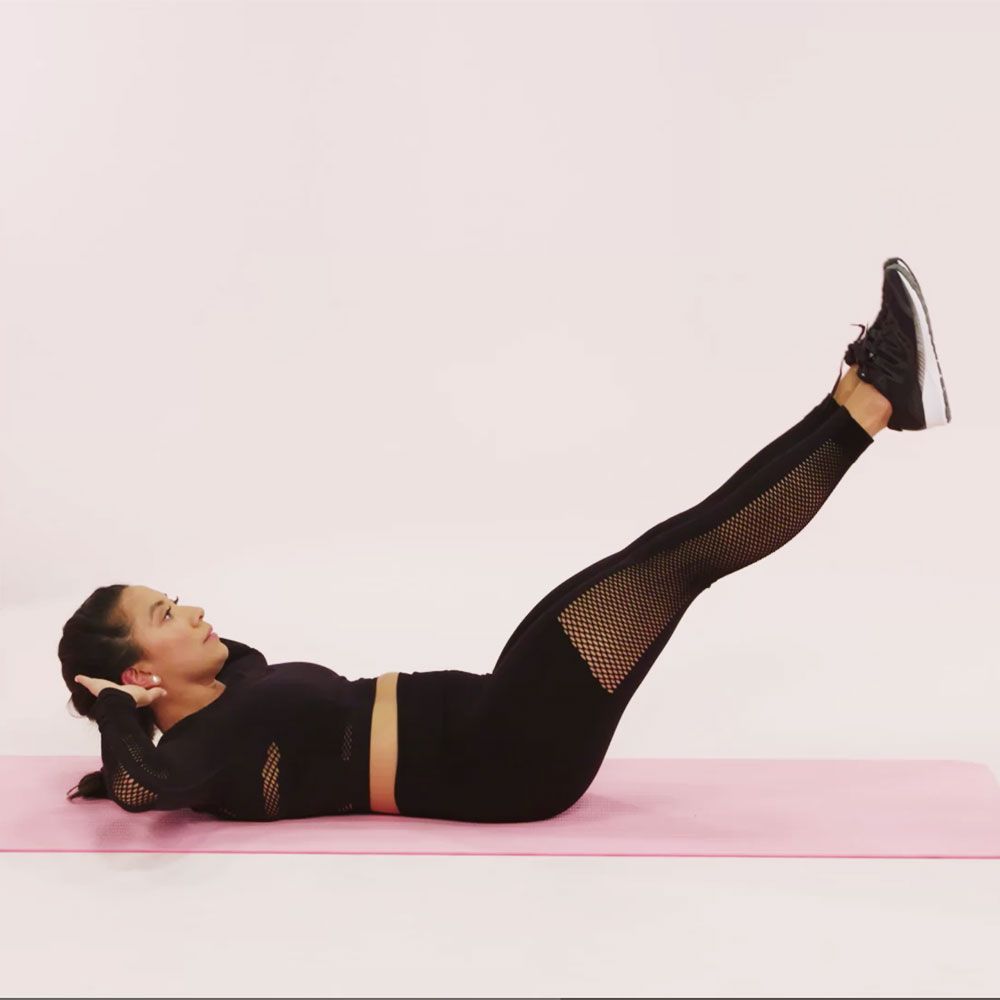Kettlebell Swings Work Almost Every Major Muscle In Your Body
Sometimes you need a good workout. Sometimes you need a fast one. If you’re short on time, your most efficient bet for both is to crank out total-body exercises. One star move that fits the bill: kettlebell swings.
“Swings work almost every major muscle in the body,” says Jacquelyn Baston, CSCS, owner of Triple Fit in Chicago. That includes your glutes, legs, core, shoulders, and pecs. Kill five birds with one stone? Yaaaaas.
How To Do Kettlebell Swings
How to: Stand with feet slightly wider than shoulder-width apart. Hold a kettlebell in front of your body with both hands, arms straight. With a slight bend in your knees and a flat back, hinge at your hips and swing the kettlebell back through your legs. Use that momentum to stand and swing the kettlebell out in front of your body, up to shoulder height. Thrust your hips forward, and engage your glutes and core as you stand up straight. When the kettlebell hits shoulder height, your knees should be straight and glutes contracted in a full hip extension. Allow the kettlebell to swing back down through your legs. That’s one rep.
Reps/sets for best results: Start with three sets of five reps, giving yourself no more than 20 seconds of rest between each set.
Kettlebell swings are fabulous for improving core stability and improving muscle imbalances.
Form tips: The emphasis in this move is on a hip hinge, not a squat, so make sure you have that movement pattern down before you pick up a ‘bell, Baston says. (Try the good morning exercise to master this hinge.) And your core needs to stay engaged throughout the entire movement. A few other things to look out for: Don’t round your back during the swing down, and don’t over-bend your knees. Also, choose the right weight kettlebell: You want one on the heavier side since you need enough weight for momentum and proper force, she explains.
Benefits Of Kettlebell Swings
Kettlebell swings are a serious full-body movement. “The glutes and leg muscles generate force while the core musculature, shoulder girdle, and pecs stabilize to control the movement,” Baston explains.



They’re fabulous for developing power, improving core stability, building endurance, and improving muscle imbalances (like shortened hamstrings and weak glutes).
There are a few variations of this move, namely American Kettlebell Swings where you squat during the downward phase of the swing instead of hinging at the hips, and and a version where you swing the kettlebell overhead instead of ending at shoulder height. The latter is almost impossible to control without hyperextending your lower back, and many people lack the shoulder mobility to fully and safely extend a weight overhead in this manner, Baston says. What’s more, the variation used here—Russian Kettlebell Swings—allows you to use more power from your hips and legs, taking some strain off your shoulders as well.
Make Kettlebell Swings Part Of Your Workout
Don’t be fooled by this seemingly simple fluid motion—kettlebell swings (and kettlebell workouts, for that matter) are intense. “Because it engages so many muscles and is dynamic in nature, you need adequate recovery time to prevent injury,” Baston explains. That means at least one day of rest in between picking up a ‘bell again. Plan to work kettlebell exercises in general, not just swings, into your routine up to two or three days per week.
Use the move’s intensity to your advantage by including it in a HIIT workout, ideally paired with pushups, planks, and squats (all bodyweight movements).
Want a complete HIIT workout? Try this routine:
When you work your strength up, you can move on to single arm swings and double kettlebell swings (that’s a weight in each hand), Baston says.
Whatever way you choose, you’ll get an awesome total-body workout—just keep swinging.
Source: Read Full Article


